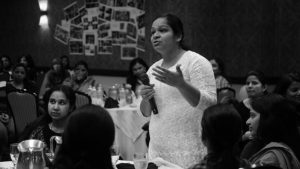Major barriers to effective communication: Communication is the process of sending messages through verbal or non verbal means. Every communication involves (at least) one sender, a message and a recipient, and the message is sent through a communication channel. Simply put, communication is the act of transferring information from one place, person or group to another. Transmission of information is the main point of any communication and for an effective communication to take place , the message passed must be understood through a correct interpretation by the receiver who then gives a feedback to the sender.
Effective communication is not magic and can be easily achievable when the communication is done right, some of the things to put into consideration for the attainment of a good communication for both the sender and reciever are; the person must be a good listener, the signs that constitute the body language (a form of nonverbal communication) of both the sender and receiver must be clear, the message must be precise and unambiguous, there must be a supply of feedback, the best medium for passing the information must be used, the message must be empathetic, clarification by the receiver, to mention but a few.
Being able to communicate effectively is an essential skill whether in our business life or our personal relationships, effective communication is the key to our success and there are many factors which exist as barriers to effective communication as they usually cause misinterpretation of the message to be passed across.
Must read: How to become a successful lawyer
What is effective communication?
Effective communication is that which as much as possible minimises the potential of misunderstanding and overcomes any form of barriers to communication at each stage in the communication process. Ineffective communication leads to a failed communication.
Also see: Major tools for economic analysis you should know
What is communication barrier?
Communication barriers can include anything that prevents or disables communicators to deliver the right message to the right person at the right time, or stop a receiver from getting the right message at the right time.
Recommended: Best time to read and understand effectively
Forms of communication
a. Spoken or Verbal Communication: this form of communication includes face-to-face conversations or such other communications through telephone, radio or television and other media.
b. Non-Verbal Communication: there are many subtle ways that communication can occur whether intentionally or unintentionally. This covers body language, gestures, dressing or other acts. For instance, hand signals or gestures can add to a spoken message.
c. Written Communication: this includes books, newspapers, magazines, letters, e-mails, social media, the Internet and other media.
d. Visualizations: graphs and charts, tables, maps, symbols and logos and other examples of visualizations can all communicate messages.
Also read: Reasons why Lawyer Put On Wigs in Court
Top 11 Major Barriers to effective communication
Some of the multiple barriers to an effective communication are;
1. Physical communication barriers: this type of barrier is the most easily recognisable one and can also be easily resolved.

Examples of physical barriers are; noise, faulty communication tools or equipments, distance between the two communicators, closed doors etc.
2. Culture and language communication barrier: in communication, the fact that certain information is provided for the people of a particular or diverse culture must be taken into account and such a communication must be made as such that it is considered culturally approprite language wise, it is a popular saying that every interpreter is a betrayer. Linguistic barrier is very lethal to effective communication as language is the most common communication tool and it is a problem because various regions in the world have their own dialect which the sender may not be able to use effectively.
3. Communication barrier of change: the only thing that does not change is change and this means that the world and everything in it is in a constant flux but the human mind find change and adaptation quite difficult and maybe even undesirable. Therefore, communication which carries information on change in any aspect of life or processes of doing things may be overlooked or totally ignored by the receivers.
Also see: Advantages and disadvantages of a written constitution
4. Emotional communication barrier: emotions go a long way in communication, whether positively or negatively. An emotionally mature person will be able to control his feeling or temper despite several situations, go ahead to engage in communication as intended and make an effective communication but for an emotional person, he may allow anger, fear, anxiety, frustration and others to affect his speech or other communication mediums and hence make his communication ineffective.

5. Mindset or personal communication barrier: preconceived notion on any subject matter or mindset and also other factors like difference in judgment, social values, inferiority complex, bias, attitude, pressure of time, inability to communicate, etc. Are personal factors which caused ineffective communication.
6. Hierarchy or status communication barrier: This usually occurs between persons who are superiors and their subordinates, where the superior because of their status may not want to listen or understand any new and important piece of information from the subordinate.

And also there may be filtering of information where the superior thinks the subordinate is not worthy of some information and the subordinate on the other hand withholds some information because he does not want to lose favour of the superior.
7. Organizational structure communication barrier: for an organization with a serious and high hierarchy, information may get distorted as it has to pass form top to bottom and this is a serious communication barrier as the information will not be acurrate amd ineffective hence making the work of the employees at the bottom to be inefficient. As WC Bennis said, “communication gets distorted particularly as it goes up the hierarchy”. Therefore, a sound organizational structure is necessary for an effective communication to take place.

Also see: Top 10 Best law firm in word 2021
8. Inadequate attention: this is a fundamental communication barrier which occurs when there is lack of listening skills or when the receiver neglects the information communicated to him for any reason. This is a problem because, for an effective communication to exist, there must have been proper comprehension and interpretation and these two factors cannot possibly play out when the information sent has not even been received with the necessary attention that is due it.
9. Information overload: information overload is a serious barrier to communication becuase there is need for the supply of information at a particular time to be commensurate to the situation which such information is meant to tackle, therefore there must be in existence a balance as little information leads to a person being uniformed while information overload may cause a person to be confused on what exactly to focus on and make him less productive.
10. Physiological communication barrier: physiological barriers to communication may result from the receiver’s physical state, also certain disorders or diseases or other limitations could prevent effective communication between the various channels of an organization. For example a partially deaf person and a person with dyslexia respectively.

11. Attitudinal communication barrier: the attitude of some persons towards communication can be seen as a communication barrier, for example introverts or people who just like to be left alone without any company.
Recommended: How to read for long at night without falling asleep
Solutions to communication barriers
Some solutions to communication barriers are as follows:
1. Research on the causes of communication barriers and application of the result of such research to tackle the communication problems.
2. Use of appropriate communication channels at all times
3. Adoption of better communication technology.
In conclusion, for any effective communication to take place, the persons involved in such must have the various barriers of communication as given above in mind and work intentionally to avoid them while also consciously applying all the measures necessary for communication so as to achieve an effective communication devoid of misinterpretations, misinformation, failed communication and the plethora adverse consequences that a wrong communication can cause to occur.

Edeh Samuel Chukwuemeka, ACMC, is a lawyer and a certified mediator/conciliator in Nigeria. He is also a developer with knowledge in various programming languages. Samuel is determined to leverage his skills in technology, SEO, and legal practice to revolutionize the legal profession worldwide by creating web and mobile applications that simplify legal research. Sam is also passionate about educating and providing valuable information to people.